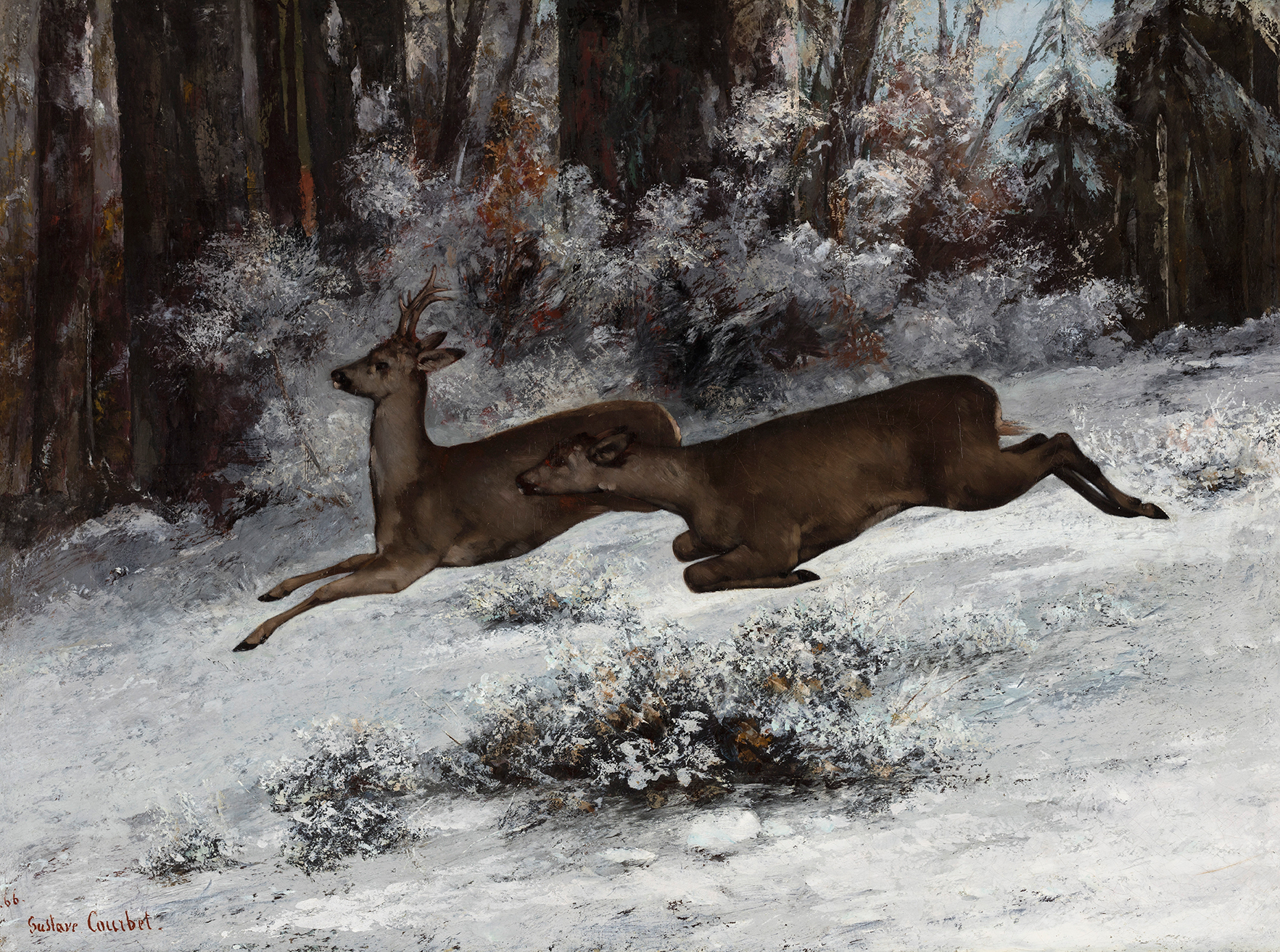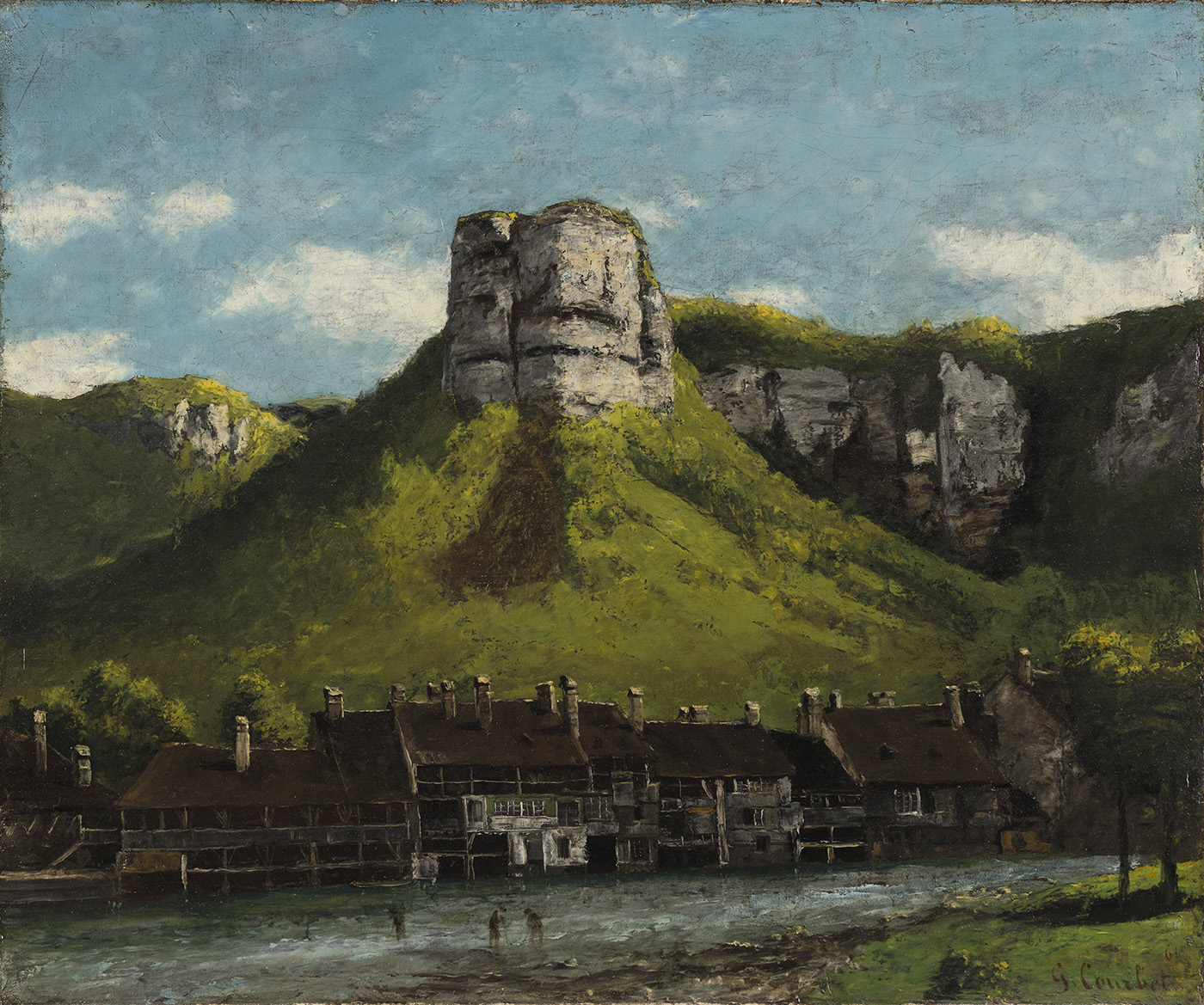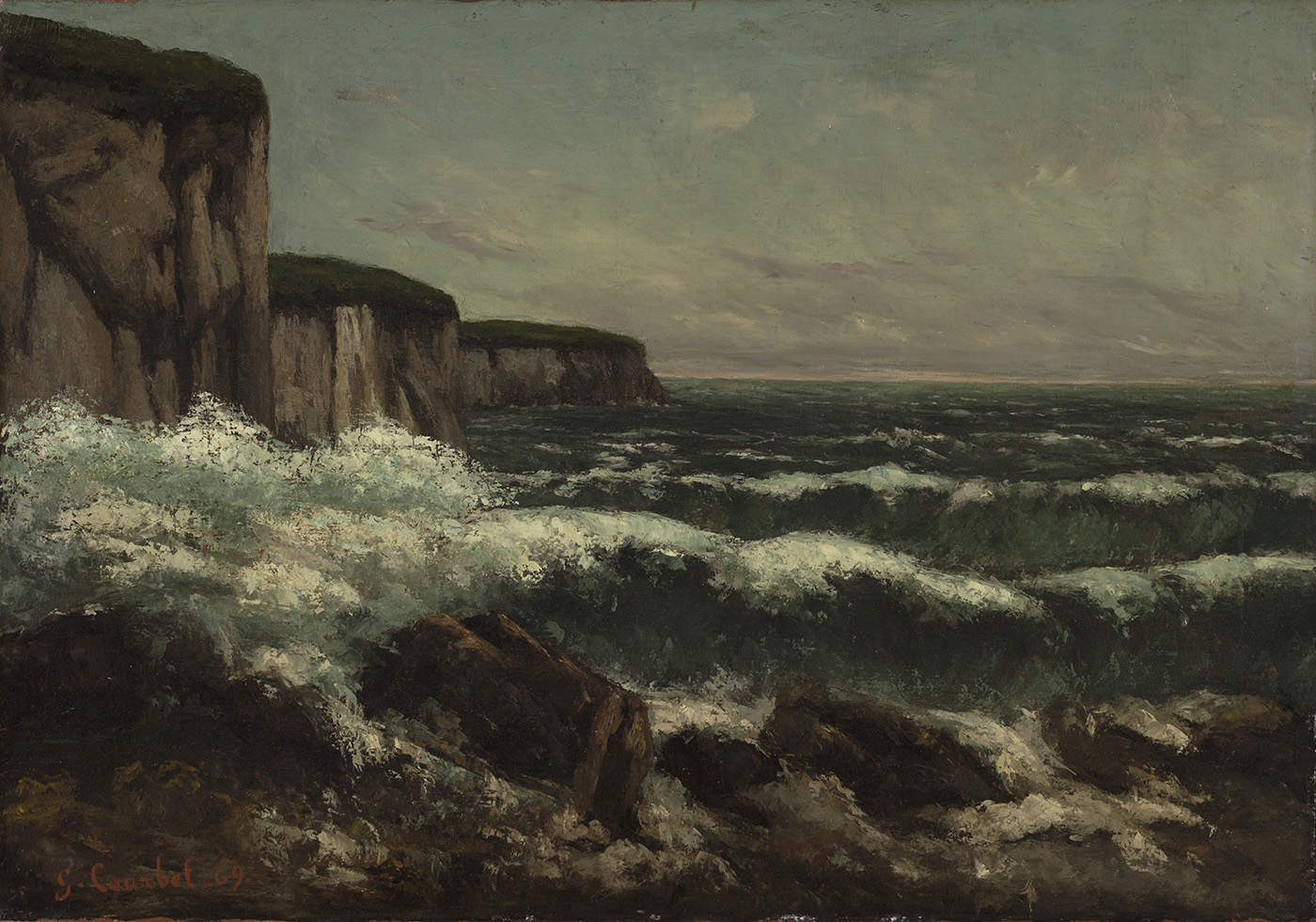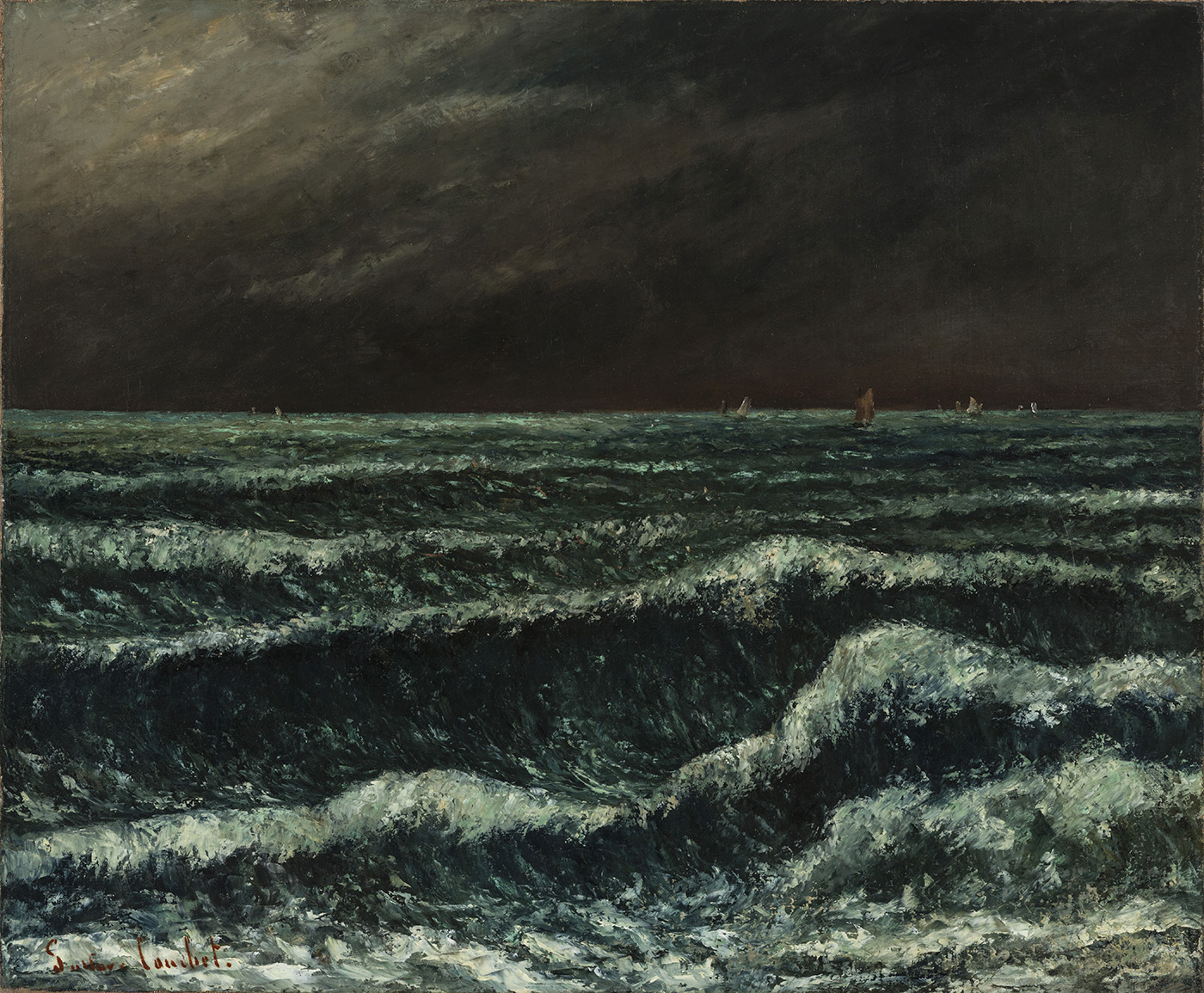1819-1877
Gustave Courbet
Courbet prepared the ground so that everyday events could be rendered in large formats in painting. He made his mark as a modernist avant-garde artist, among other ways, by building a Pavillon du Réalisme (Pavilion of Realism) to exhibit his own works in connection with the World Exhibitions in Paris in 1855 and 1867. Courbet’s uncompromising attitude in his life and work has been important to subsequent generations of artists.
Motifs: Self-portraits, landscapes, hunting scenes, still lifes, pictures of nude women and everyday scenes in monumental format.
Gustave Courbet
The Ruse, Roe Deer Hunting Episode, Franche-Comté
1866
Oil on canvas
97 x 130 cm

Oil on canvas
97 x 130 cm
1866
It was quite typical of Courbet to focus on a hunting motif like this in a large format. The picture has a distinctive dramatic quality, inherent in the way the leaping deer are fixed and rigid, while the static natural surroundings seem to be in motion. Courbet produced this effect by painting the animals in great detail with smooth surfaces, and in contrast using a more expressive palette knife technique to render the carpet of snow in the undergrowth. The white paint is spread over the dark landscape with the palette knife and creates a very subtle, intimate picture of the surface of the snow-cover.
The painting is an expression of Courbet’s insistence on a subjective realism which, thanks to the painting method, creates an intimacy between the observer and the picture.
Gustave Courbet
The Wiremakers’ Workshops on the River Loue, near Ornans
1861
Oil on canvas
55 x 66 cm

XX
55 x 66 cm
1861
Gustave Courbet
The Cliffs near Étretat
1869
Oil on canvas
62 x 88 cm

XX
62 x 88 cm
1869
Gustave Courbet
The Wave
Date unknown
Oil on canvas
54 x 65,5 cm

XX
54 x 65,5 cm
XX